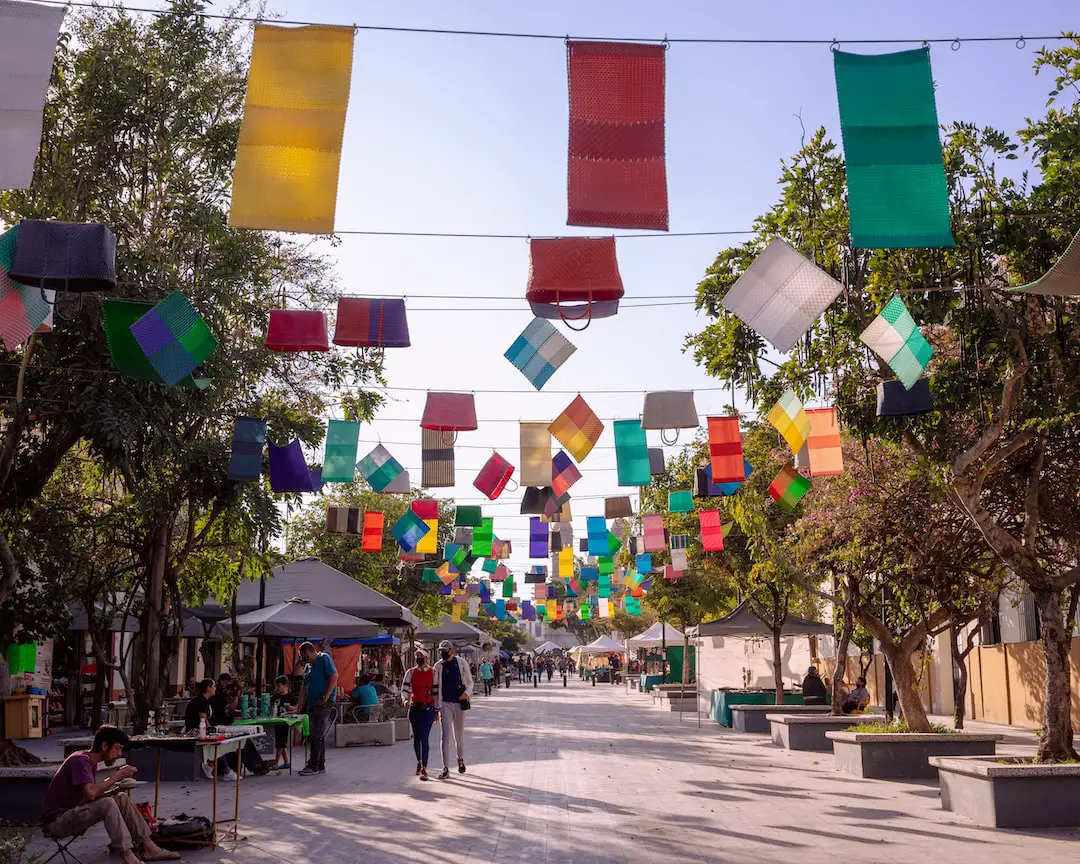
Nestled in the heart of Jalisco, Mexico, Zapopan is a city that’s been quietly shaping its skyline and streets with a rich tapestry of architectural styles. It’s a place where the past and present dance in a harmonious blend of buildings, from the whispers of colonial grandeur to the bold statements of modernity. As someone who’s wandered through its streets and marveled at its structures, I’ve seen firsthand how Zapopan’s architecture tells a story of cultural evolution and artistic expression.
The city’s architectural journey began with the indigenous people, whose influence is still seen in some of the more traditional designs scattered throughout the area. The Spanish conquest brought with it the Baroque style, which is epitomized by the Basilica of Our Lady of Zapopan. This 17th-century church is not just a religious sanctuary but also a cornerstone of Zapopan’s architectural heritage.
As the city grew, so did its architectural ambitions. The 19th and 20th centuries saw a mix of neoclassical and modernist styles. Public buildings and private residences alike began to reflect a more European influence, with clean lines and functional designs. Yet, Zapopan never lost its local flavor, with architects incorporating regional materials and motifs into their work.
Fast forward to today, and you’ll find that Zapopan is a canvas for contemporary architects. The Andares shopping complex and the Puerta de Hierro area showcase sleek glass facades and innovative design that speak to the city’s forward-thinking mindset. Yet, amidst this modernity, Zapopan’s soulful past is never overshadowed.
Indigenous Roots and Colonial Influence
Long before the Spanish set foot on what is now Zapopan, the region was inhabited by indigenous tribes. Their simple yet functional structures laid the groundwork for the city’s architectural narrative. With the arrival of the Spanish, Zapopan began to transform. The Basilica of Our Lady of Zapopan, with its ornate altars and intricate carvings, is a testament to the Baroque style that dominated the era. It’s a place where I’ve often felt the weight of history in every stone.
The European Touch
As the centuries rolled on, European influences began to seep into Zapopan’s architecture. The neoclassical trend of the 19th century brought with it a sense of order and symmetry. Public buildings, such as the Municipal Palace, were constructed with this aesthetic in mind, featuring grand columns and pediments that evoke a sense of authority and stability.
Modernist Movements
The 20th century ushered in a wave of modernism. Architects like Luis Barragán, a native son of Jalisco, began to challenge traditional designs with their minimalist and functional creations. Barragán’s influence is palpable in Zapopan’s residential areas, where homes are not just living spaces but also works of art that play with light, color, and form.
Contemporary Constructions
Today, Zapopan is a hub for contemporary architecture. The city’s skyline is dotted with buildings that break the Mold, like the angular forms of the Telmex Auditorium. These structures aren’t just about aesthetics; they’re about sustainability and innovation, reflecting Zapopan’s commitment to a future where design and functionality coexist.
FAQs
- What architectural styles can be found in Zapopan?
Zapopan boasts a variety of styles, from the Baroque Basilica to modernist homes and contemporary commercial buildings. It’s a rich blend that reflects the city’s historical layers.
- How has Luis Barragán influenced Zapopan’s architecture?
Barragán, a renowned modernist architect, brought a minimalist approach to Zapopan. His designs emphasize light, space, and local materials, leaving a lasting impact on the city’s residential architecture.
- Are there any guided tours to explore Zapopan’s architecture?
Yes, there are guided tours available that focus on Zapopan’s architectural landmarks, offering insights into the city’s history and design evolution.
Conclusion
Zapopan’s architecture is a living history book, with each Page turned revealing a new chapter in design. From the indigenous and colonial structures to the modernist movements and contemporary innovations, the city’s buildings are a testament to its evolving identity. As a visitor or a local, one can’t help but be inspired by the way Zapopan has embraced its past while boldly stepping into the future. It’s a place where architecture isn’t just about creating spaces but about crafting experiences that resonate with the soul.
For those looking to invest in real estate or simply appreciate the art of design, Zapopan offers a unique perspective. It’s a city where every corner holds a story, every façade speaks of a time gone by, and every modern line points to the horizon of possibilities. So, whether you’re strolling through the shadow of the Basilica or gazing up at a sleek new tower, remember that you’re not just seeing buildings—you’re witnessing the heartbeat of a city that has mastered the art of architectural storytelling.